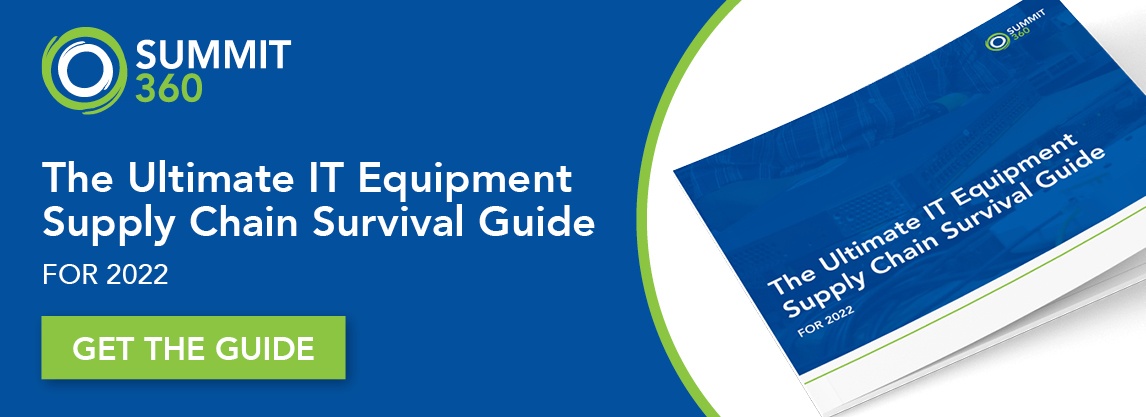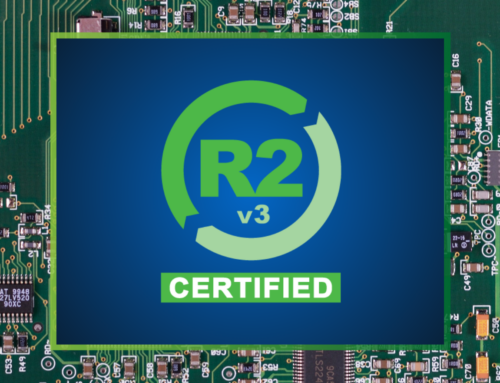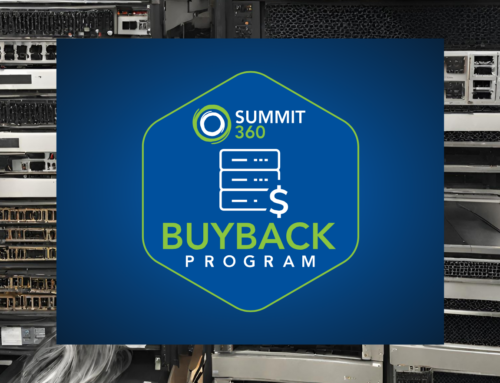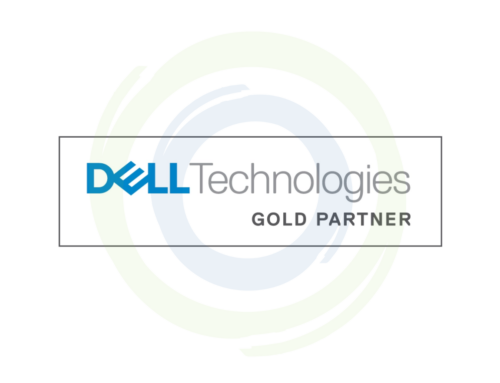Over the last 24 months, we’ve collectively learned more about supply chains than we ever thought we’d need to know. The information technology supply chain crisis could certainly significantly impact many businesses.
Equipment shortages and supply chain constraints make finding everything from laptops and desktops to servers and storage complex. While some industry experts predict the disruptions are in the process of resolving, others believe we’ll still need to navigate the uncertainty for several quarters.
Continue reading below to learn more about the information technology supply chain crisis, its effects, and disruptions.
Information technology supply chain disruptions and strategic planning
If you’re like the dozens of IT leaders we talk with each week, you need new IT equipment and are anxious for the supply chain to flow more smoothly. In particular, IT leaders are facing one of these two scenarios:
- Scenario #1: You spent the last two years just keeping your teams online in our new work-from-anywhere world. Now, you’re ready to get back to the actual IT work your company hired you to do. Maybe you even have some capital expenditure dollars to expand your storage or server capacity.
- Scenario #2: You’re in a high-growth industry (e.g., transportation and health care) and urgently need to expand your capacity or replace hardware nearing its end of life.
Neither of these scenarios is ideal because the equipment you need isn’t as readily available as a few years ago. In today’s information technology supply chain environment, you need to plan differently to keep pace with your operations.
Let’s walk through how to manage the three biggest challenges you’re facing with the information technology supply chain crisis.
3 ways the information technology supply chain crisis affects your business
#1: Prices are going up
If you’ve been to the grocery store recently, you’ve already seen post-pandemic inflation. Higher prices are finding their way into nearly every category, and enterprise-level IT hardware is no exception. CIOs are concerned about IT budgets and whether what they budgeted for last year will cover all of the work they need to deliver this year.
In this environment, dusting off a previous AOP budget and adding 10% isn’t going to give you a realistic view. Your top-of-range estimates need to be higher, and you should be prepared to pay more than you’ve paid in the past. In addition, you should expect to pay a premium for anything you need quickly (if it’s available).
Even if you are willing to pay higher prices, you may have difficulty finding products on shelves.
#2: Product lead times are getting longer
According to Gartner, “pre-pandemic, lead times of 4-6 weeks were common. Now, 200 – 300 days is common, and we’ve seen 430+ days quoted in writing to customers.”
Given this, we recommend thinking through your hardware needs as soon as possible to estimate what you’ll need in the next 6-12 months – whether that’s phones, servers, or laptops. Then, place your order as soon as possible. You’ll still need to wait, but at least you’ll be in the queue. And don’t forget to build plenty of buffer into your project timelines.
- Example: if you think you’ll want to add 40 switches by the end of 2022, buy them now. Even if you sit on them until you’re ready to deploy, buy them now. In addition, if you think you need 40, order 50, just in case. Finally, be more flexible with criteria like manufacturers or model numbers. Focus instead on what’s functional and available.
Finally, there’s another lead-time challenge that many companies don’t talk about it but is causing frustration for tech leaders are mid-sized companies. Some original equipment manufacturers (OEMs) make tough choices about prioritizing their fulfillment when there’s more demand than supply. If you’re a mid-sized company, you may end up in line behind a large enterprise purchase.
#3: Sales channels are expanding
With traditional resellers under pressure, more companies are open to sourcing IT equipment through alternative channels, including independent resellers like Summit 360. If you’re responsible for procuring hardware and cannot find what you need through traditional resellers, going the independent route may be for you.
Navigate this information technology supply chain with Summit 360
We predict it will take well into 2023 before new equipment is more readily available to companies of every size. But that’s a long time to wait if you need hardware in the meantime.
At Summit 360, we have over 30 years of experience helping companies procure IT hardware – new or refurbished. Over the years, we’ve built a trusted network of alternative-channel partners and are known for our strategic sourcing expertise.
Few competitors have our combination of experience plus our proven process and 360 Approach to IT asset management. If today’s supply chain is making you rethink your options, we welcome the chance to hear about your goals and walk you through what’s available.
Want to learn more? Contact us today.





